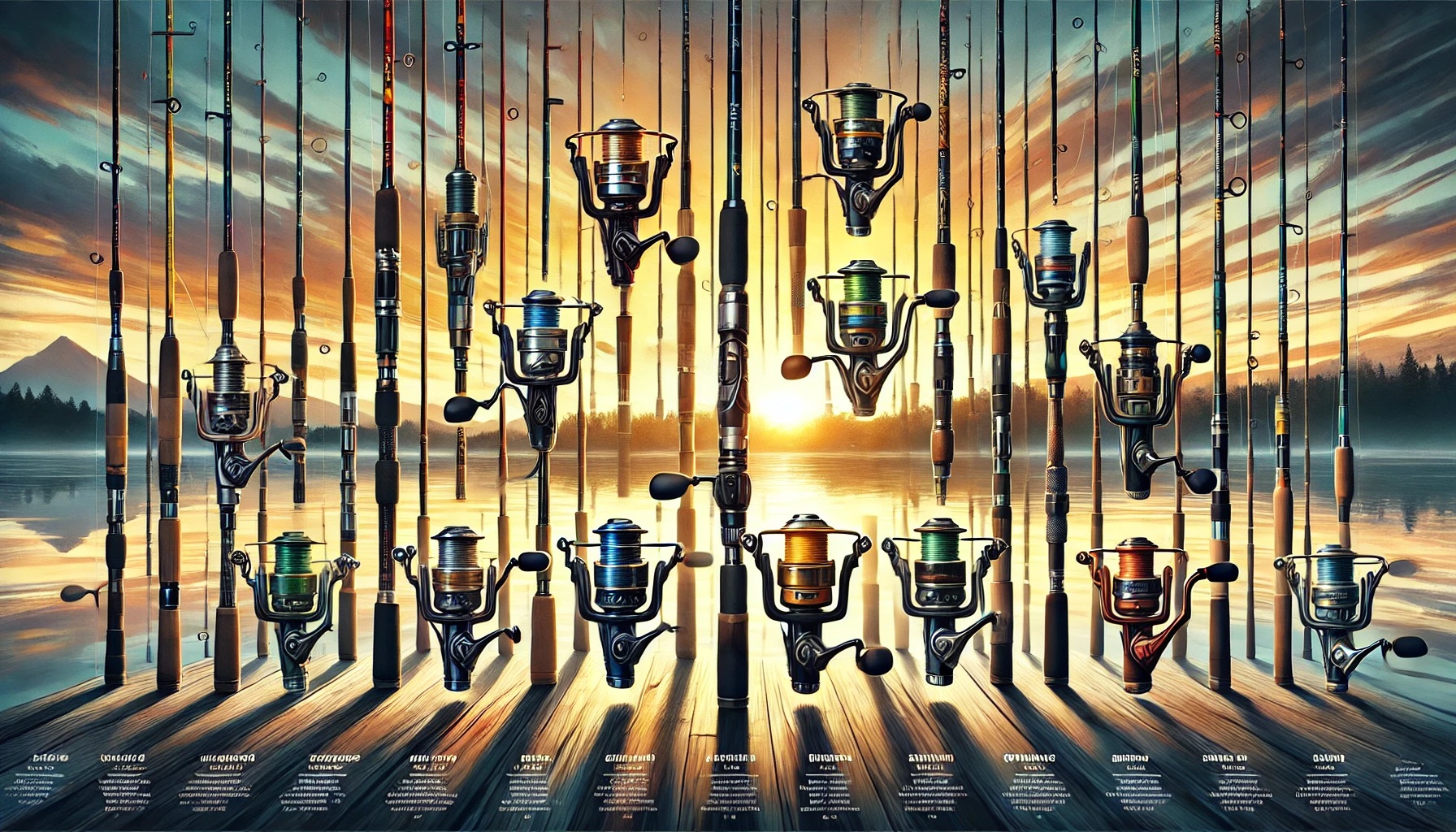Choosing The Correct Fishing Rod

Fishing rods are essential tools for anglers, serving as the primary link between the angler and the fish. They come in various types, materials, lengths, and actions, each designed for specific fishing techniques and conditions. Understanding the key components and characteristics of fishing rods is crucial for selecting the right tool for the job. Here's an overview of fishing rods:
Components of a Fishing Rod:
Blank:
The main shaft or body of the rod is called the blank. It is typically made of materials such as graphite, fiberglass, bamboo, or a combination of these. The blank's composition influences the rod's weight, sensitivity, and strength.
Guides:
Guides are small rings or loops mounted along the length of the rod to guide the fishing line. They are usually made of materials like aluminum oxide, ceramic, or stainless steel. The number and placement of guides affect the rod's performance.
Reel Seat:
The reel seat is the component that secures the fishing reel to the rod. It is usually located near the rod's handle and is made of materials like graphite or metal. Reel seats come in various styles, including spinning, casting, and fly reel seats.
Handle or Grip:
The handle, also known as the grip, is where the angler holds the rod. Handles can be made of materials like cork, EVA foam, or rubber. The design and length of the handle vary between rod types and fishing styles.
Butt:
The butt is the thicker end of the rod, opposite the tip. It provides leverage and stability when fighting larger fish. Some rods have a detachable butt for versatility.
Action:
Action refers to how much the rod flexes when pressure is applied. Rods can be classified as slow, medium, or fast action. Fast action rods bend mostly near the tip, while slow action rods bend throughout the length.
Power:
Power, often referred to as the rod's "backbone," indicates how much pressure is required to bend the rod. Rods are classified as ultralight, light, medium, medium-heavy, heavy, or extra-heavy based on their power.
Types of Fishing Rods:
Spinning Rods:
Spinning rods are versatile and popular for various fishing applications. They are characterized by a reel seat that faces downward and are suitable for spinning reels.
Casting Rods:
Casting rods are designed for use with baitcasting reels. They often have a trigger grip and are favored for techniques like flipping, pitching, and casting heavier lures.
Fly Rods:
Fly rods are designed specifically for fly fishing. They are long, lightweight, and flexible, allowing anglers to cast artificial flies with precision.
Surf Rods:
Surf rods are longer rods designed for casting into the surf from the shore. They provide the necessary length to achieve greater casting distances.
Ice Fishing Rods:
Ice fishing rods are short and designed for use in confined spaces on frozen lakes. They often have sensitive tips to detect subtle bites.
Telescopic and Travel Rods:
Telescopic rods collapse into themselves for easy transportation. Travel rods are designed for anglers on the go and often come in multiple pieces.
Considerations When Choosing a Fishing Rod:
Fishing Technique:
Choose a rod based on the fishing technique you'll be using. Different techniques require specific rod actions, lengths, and powers.
Species and Size of Fish:
Consider the size and species of fish you intend to target. Lighter rods are suitable for smaller fish, while heavier rods are needed for larger species.
Line and Lure Weight:
Match the rod's specifications to the line and lure weights you plan to use. This ensures optimal performance and casting distance.
Rod Length:
Longer rods generally offer greater casting distance, while shorter rods provide more control in tight spaces. Choose a length based on your fishing environment and preferences.
Material:
The material of the rod affects its weight, sensitivity, and strength. Graphite rods are lightweight and sensitive, while fiberglass rods are durable and offer more flexibility.
Budget:
Consider your budget, as fishing rods come in a wide price range. Quality rods are available at various price points, so choose one that fits your needs and budget.
Maintenance:
Cleaning:
Rinse your rod with fresh water after each use, especially if used in saltwater. Wipe it down with a soft cloth to remove salt and dirt.
Storage:
Store your rods in a cool, dry place. Avoid leaving them in direct sunlight or extreme temperatures, as this can damage the rod's components.
Regular Inspections:
Periodically inspect guides, reel seats, and the rod blank for any signs of damage or wear. Promptly address any issues to ensure the rod's longevity.
Fishing rods are crucial tools that, when chosen wisely and maintained properly, enhance the angler's experience and increase the chances of a successful catch. Whether you're a novice angler or an experienced pro, selecting the right rod for your fishing needs is a key step in enjoying the vast and diverse world of fishing.
Please Share this Article with your Friends or Colleagues.
From the Author: Earnest Sherrill
If there's one message I hope to leave with my readers, it's this: Don't wait. Get outside, explore, and create your own memories in the wild while you still can. Whether it's a weekend camping trip, a day hike, or even just sitting quietly in a park, the outdoors offers something for everyone.For those who share my passion or simply want to support a voice dedicated to celebrating the wild, consider helping sustain this work. Your support allows me to continue writing, reflecting, and sharing the wonders of the natural world.
Together, we can keep the spirit of the outdoors alive, one story, one adventure, and one "coffee" at a time.
Recent Posts
Submit your Site


